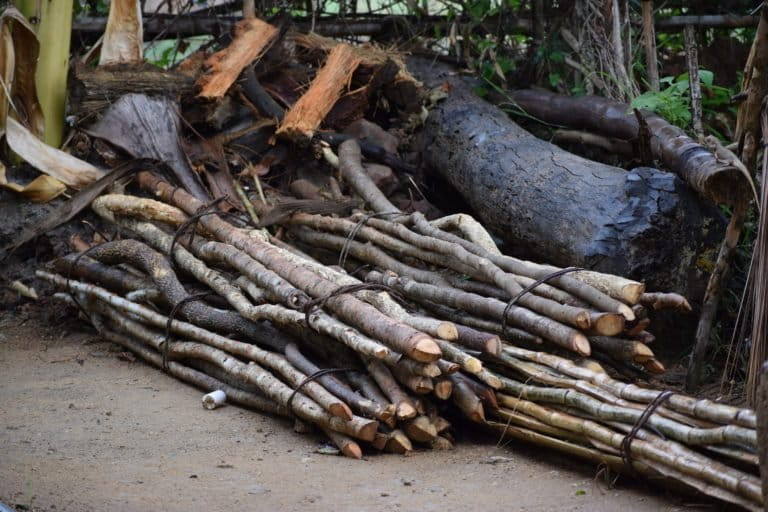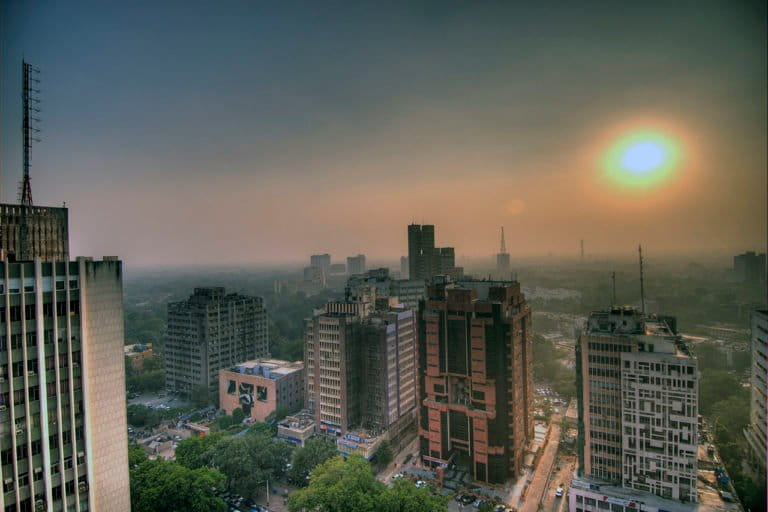- Researchers modelled PM 2.5 emissions arising from four sectors – residential, transportation, industrial, and energy, over each state and union territory in 2010. They also estimated how many premature deaths could be avoided if emissions from each sector were curbed completely.
- The amount of residential emissions dominated at approximately 70 percent country-wide – greater than the combined share of emissions from the other three sectors, which were concentrated to a few hotspots. The highest residential emissions were observed in the eastern Indo-Gangetic Plains and northeastern states.
- Most premature deaths from PM 2.5 emissions can be avoided by providing clean cooking fuel to a larger proportion of the population.
- Meteorological conditions play a large role in transporting emissions from one state to another and clean air policies must take this into account.
While air pollution in metropolitan cities like Delhi has hogged the headlines over the past few years, we don’t know much about how our emissions from various activities are affecting air quality throughout India.
Now, a team of researchers from the Indian Institute of Technology Delhi has estimated emissions of fine particulate matter, widely known as PM2.5, from various sectors at the state-level. PM2.5 refers to very fine particles that are smaller than 2.5 microns in diameter, which can penetrate deep into the lungs upon inhalation, potentially triggering various ailments, especially respiratory diseases.
Their study revealed that barring a few cases, the share of residential emissions are the highest in most states – greater than the combined share of emissions from transport, industry, and energy. They concluded that most premature deaths due to PM2.5 in India can be reduced if a greater proportion of the population switches to clean fuels for cooking as opposed to solid fuels for domestic purposes.
Dominick Spracklen, a professor at the University of Leeds, who published a similar study on ambient PM2.5 emissions over India in February 2018, said that “by using a model with much finer resolution than previous research, this important study confirms that cooking with solid fuels such as wood and charcoal is the dominant cause of poor air quality across most of India.”

Modelling human sources of PM2.5 emissions over India
Using a chemical transport model, researchers simulated emissions of PM2.5 in 2010 arising from four major year-round human-generated sources: residential, transportation, industrial, and energy.
While other studies have quantified PM2.5 emissions across India, most of them used coarse-resolution models and so state-specific values were not directly available for the four sectors. The model used in this study revealed emissions at a much finer scale showing the differences between the states and union territories.
Emissions from the residential sector include those from household activities such as heating, cooling, lighting and cooking, as well as emissions from landfills and incineration. The transportation sector includes emissions generated from ground transportation, while large-scale combustion and industrial processes are considered for the industrial sector. Finally, the energy sector considers emissions from power generation by coal-fed plants.
The team also calculated how many premature deaths due to PM2.5 exposure could be avoided annually if emissions from these sectors were completely mitigated at the state-level. These deaths are caused due to chronic obstructive pulmonary disease (COPD), ischemic heart disease, stroke, and lung cancer.
Residential emissions dominant
Like other studies, they found that overall the residential sector had the highest share of PM2.5 emissions over India, which was more than 50 percent in most states, greater than the combined shares of the other three sectors, which were dominant at a few localised hotspots.
With the exception of Delhi and a few industrial hotspots, the residential sector contributed to over 70 percent of the annual human-derived sources of PM2.5 emissions in India with the contribution reaching up to 80 percent in the Himalayan foothills, eastern Indo-Gangetic Plains and northeast. Almost two-thirds of the residential emissions could be attributed solely to solid fuel burning, as opposed to other domestic sources such as heating, cooling, and lighting.
In contrast, the emissions from the industrial sector ranged from 8 to 24 percent in most parts of the country, with the exception of Gujarat, the Mumbai industrial corridor and clusters in industrial states where the shares were higher. Likewise, emissions from transportation ranged from 8 to 16 percent over most of India but were higher in a few states such as Delhi NCR (highest at 65 percent) and Kerala. The lowest contribution to PM2.5 emissions was from the energy sector, which was less than 8 percent in most states but was highest (32 percent) in the mining state Chhattisgarh followed by the union territory of Puducherry (28.7 percent).
Transport of pollution downwind
Himalayan states such as Jammu & Kashmir, Arunachal Pradesh, Sikkim and Uttarakhand had a higher exposure to human-generated emissions compared to the intensity of emissions from those states. This is likely due to the exposure of emissions transported to the region from other states.
The case of Delhi was unusual, says Sagnik Dey, associate professor at the Centre for Atmospheric Sciences, Indian Institute of Technology Delhi and co-author of the study. He explains that although Delhi had very high emissions per unit area, the annual exposure to PM2.5 emissions from within the state was low implying that the emissions from Delhi are probably blown downwind during some seasons.

“Transport of pollutants depends on meteorological conditions and it doesn’t depend on state boundaries,” explained Dey. “Earlier, the notion was that you control emissions within a district/state/region and pollution will reduce. Not anymore given the role of meteorology in India.”
Consequently, he stated that the “benefits of mitigation measures may be at some other region in downwind directions” and that this needs to be accounted for when developing clean air policies. He cited the scenario where if emissions in Delhi are terminated, downwind Faridabad would also benefit. “If Faridabad wants to reduce pollution, they cannot succeed by controlling emission from within the city boundary. Hence, a synergistic air quality plan is required,” suggested Dey.
Targeting residential emissions the key to health benefits
The study found that completely reducing emissions from residential sources would result in the highest reduction of annual premature deaths (378,295), whereas the number of deaths that would be avoided due to the cessation of combined emissions from the industrial (46,000), transportation (28,180) and energy (18,201) sectors amounted to 92,280.
Compared with southern and central states, Bihar and Uttar Pradesh had the highest premature mortality due to PM2.5 exposure at 289 and 216 deaths per 100,000 people respectively.
Interestingly, even though Delhi had the lowest residential emissions (9 percent) and the highest transportation emissions (65 percent) compared to all other states, the number of premature deaths saved by curbing the former was higher than from mitigating the latter. The researchers believe this might be because Delhites were exposed to residential emissions transported from upwind states such as Punjab and Haryana.

Regionally, the study found that reining in residential emissions from areas dominated with a rural population – Uttarakhand, Uttar Pradesh, Bihar, Jharkhand, West Bengal, Madhya Pradesh, Chhattisgarh, Orissa and the northeastern states – will save 60 to 140 premature deaths per 100,000 of the population.
Dey asserts that controlling residential emissions would have triple benefits, which would be gained from reducing household exposure, ambient exposure, and improved baseline mortality for the diseases associated with PM2.5 emissions. Baseline mortality for a disease is the total number of deaths from all causes including air pollution, but Dey explains that if those who are already vulnerable to say stroke, for example, are further exposed to air pollution, their condition may worsen, leading to a higher baseline mortality. So by reducing exposure to residential emissions, the overall health condition of the population would improve leading to a lower baseline mortality. In fact, Dey expects premature baseline mortality to improve substantially because household exposure to PM2.5 is much greater than ambient exposure in India.
“The study has important implications for air quality management in India,” noted Spracklen, stressing that “policies that promote clean cooking are essential and are likely to have the biggest benefits for air quality in India.”
The team cautions that the study did not consider seasonal emissions from crop residue burning, solid-waste burning, re-suspended dust and brick kilns, which would reduce the relative shares of each sector further. Also, they acknowledge that completely reducing emissions from each sector is difficult to achieve and that this study considers the maximum expected health benefits of curbing PM2.5 emissions.
CITATION
Upadhyay, A., Dey, S., Chowdhury, S., Goyal, P. (2018). Expected health benefits from mitigation of emissions from major anthropogenic PM2.5 sources in India: Statistics at state level. Environmental Pollution, doi.org/10.1016/j.envpol.2018.07.085
Banner image: A farmer in Punjab walks a field covered in smoke after burning the rice residues. Photo by Neil Palmer (CIAT)/Flickr(Creative Commons).
